
China
08:02, 22-Jun-2017
Joint rail checkpoint to strengthen Hong Kong-mainland links
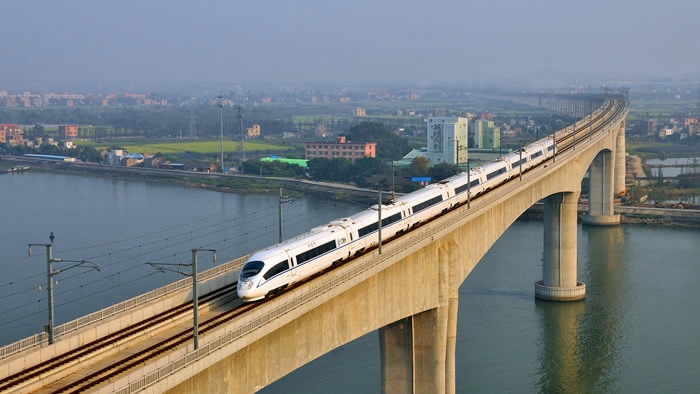
The Hong Kong Section of the Guangzhou-Shenzhen-Hong Kong Express Rail Link (XRL) will significantly benefit passengers and promote integration of Hong Kong and the Chinese mainland – particularly if joint checkpoint arrangements can be implemented at West Kowloon Terminus in Hong Kong, local officials told CGTN in recent interviews.
Joint checkpoint arrangements, more often referred to as "co-location" of exit-entry control facilities, would enable passengers to undergo inspections for both the mainland and Hong Kong in the same location.
The Hong Kong Section of the XRL, slated for completion in the third quarter of 2018, will link the Special Administrative Region (SAR) to the national high-speed rail network of China, allowing passengers to travel directly between Hong Kong and 16 major mainland cities.
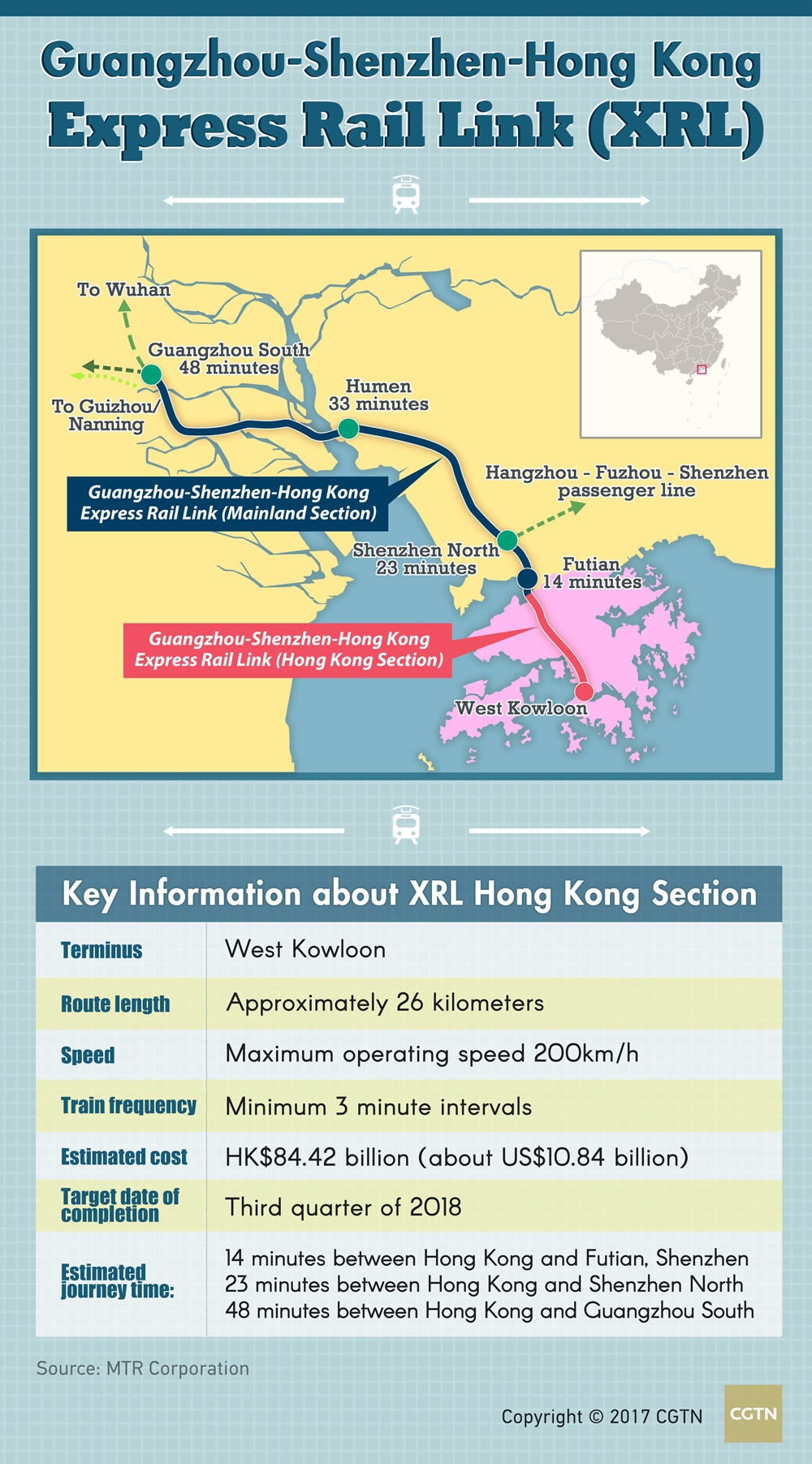
CGTN Graphic
CGTN Graphic
Strengthening Hong Kong's position as 'south gate' of China
Jimmy Chan Pai-ming, principal government engineer and director of the Railway Development Office under Hong Kong's Highways Department, said he hoped the XRL would facilitate the long-term development of Hong Kong and mainland cities and strengthen the SAR's strategic position as a "south gate" of China.
The Railway Development Office of Hong Kong's Highways Department is a government agency responsible for the implementation of railway projects, including the XRL Hong Kong Section, and planning Hong Kong's future railway expansion.
"If the Hong Kong Section of the Guangzhou-Shenzhen-Hong Kong Express Rail Link is connected to the national rail network, it will provide a convenient, reliable and comfortable high-speed rail service to passengers," Chan said.
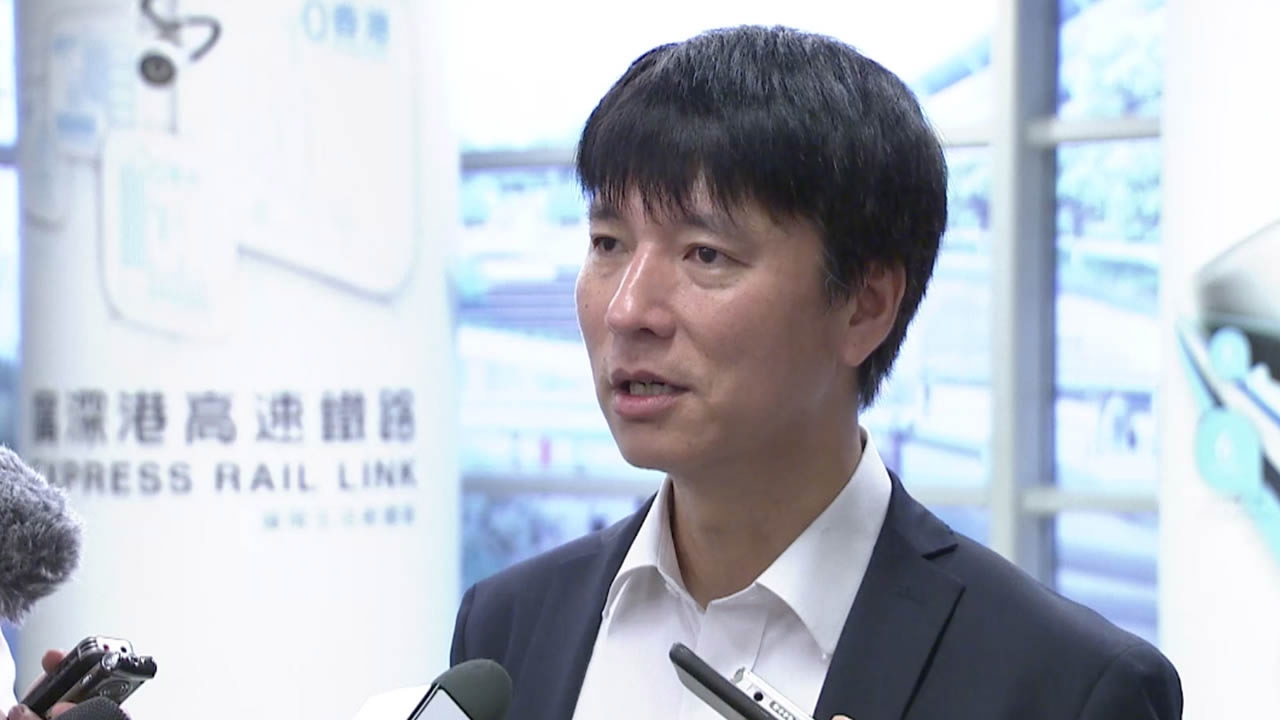
But making the most of the XRL requires "co-location" arrangements, details of which are being ironed out by Hong Kong and the mainland authorities, he added.
Under the Basic Law, Hong Kong SAR operates its own entry-exit control, which means people traveling between the mainland and Hong Kong need to accept border inspections by both sides.
For example, passengers taking the current Guangzhou-Kowloon train need to pass the mainland's checks at Guangzhou East Railway Station and Hong Kong's checks at Kowloon Station separately.
"But if 'co-location' arrangements can be implemented at West Kowloon Terminus, passengers (going to the mainland from Hong Kong) will be able to pass the exit inspection of Hong Kong and the entry inspection of the mainland in the same station, and vice versa," Chan told CGTN.
When a mainland passenger travels to Hong Kong, he or she would be able to get on a train at any high-speed rail service station across the country and go through the exit inspection of the mainland and the entry inspection of Hong Kong upon arrival at West Kowloon Terminus, he elaborated, stressing that "co-location" arrangements will bring passengers lots of convenience.
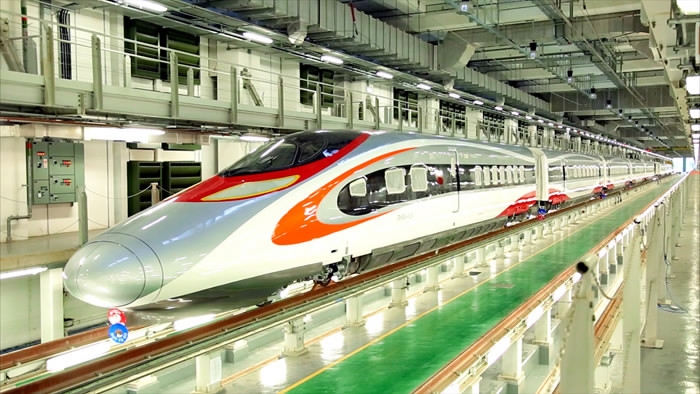
A train designed for the Guangzhou-Shenzhen-Hong Kong Express Rail Link. /Photo via MTR (Hong Kong's Mass Transit Railway Corporation)
A train designed for the Guangzhou-Shenzhen-Hong Kong Express Rail Link. /Photo via MTR (Hong Kong's Mass Transit Railway Corporation)
"It will also save passengers' time," Chan said. After the XRL Hong Kong Section comes into service, the estimated travel time between Guangzhou and Hong Kong will be reduced from two hours to 48 minutes, he added.
In Chan's words, the project will "facilitate the integration of Hong Kong and the mainland."
'Co-location' under 'One Country, Two Systems'
Chan's expectations for the XRL were shared by senior officials at the SAR's Transport and Housing Bureau and Department of Justice.
Yau Shing-mu, under-secretary for transport and housing, told CGTN that by connecting Hong Kong to the national network of high-speed railways, the XRL would be very convenient for Hong Kong residents traveling to the mainland and mainland people coming to the city.
The XRL, alongside the Hong Kong-Zhuhai-Macao Bridge expected to open to traffic by the end of 2017, will link Hong Kong closely to the mainland, he said.
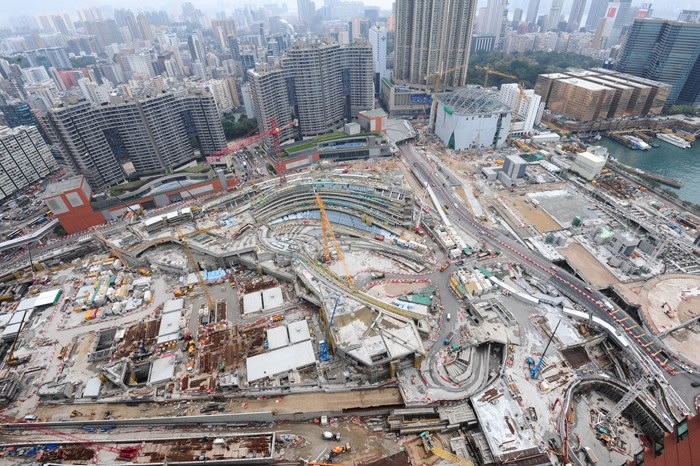
The construction site of West Kowloon Terminus in Hong Kong. /Photo via MTR
The construction site of West Kowloon Terminus in Hong Kong. /Photo via MTR
Secretary for Justice Rimsky Yuen Kwok-keung emphasized that the "co-location" of checkpoints at West Kowloon Terminus would be crucial to maximizing the XRL's benefits.
"The ultimate goal is to implement 'co-location' arrangements," Yuen said. "We hope to maximize the economic and transport efficiency of the XRL Hong Kong Section in the future."
A key issue to be solved is how to devise a "co-location" scheme under the framework of the Basic Law, he stressed.
Yuen has responded to questions about the issue several times this year, underscoring a "consensus" between the SAR authorities and the central government that the arrangements must be "strictly in accordance with the Basic Law" and "consistent with the spirit of the 'One Country, Two Systems' policy."

The design of the interior of Hong Kong's West Kowloon Terminus. /Photo via MTR
The design of the interior of Hong Kong's West Kowloon Terminus. /Photo via MTR
In his interview with CGTN, Yuen said "co-location" arrangements between Hong Kong and the mainland were not without precedent, citing the operation of a Hong Kong immigration control point at the Shenzhen Bay Port on the mainland since 2007 as an example.
As for how to implement "co-location" arrangements in Hong Kong, the SAR government and relevant departments of the central government have studied various proposals, he revealed.
"We will present our proposals to Hong Kong's Legislative Council and Hong Kong society at an appropriate time," he added.
1971km
Related stories:

SITEMAP
Copyright © 2018 CGTN. Beijing ICP prepared NO.16065310-3
Copyright © 2018 CGTN. Beijing ICP prepared NO.16065310-3